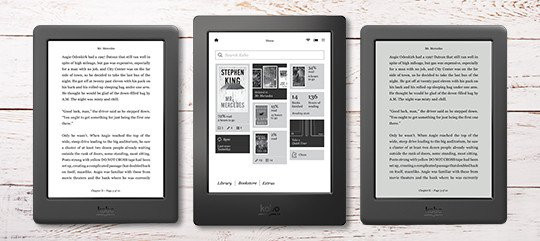When it comes to dedicated ebook readers the technology evolves at a much slower pace than other forms of electronics.
With computers, tablets and phones there are tons of different processors and hardware components used among them.
But with ebook readers they all share some of the same components.
In fact all E Ink ereaders use the same processors from Freescale.
For the past 4 years all Kindles, Kobos, Nooks, and a number of other brands use the same exact i.MX6 processor.
A few Android-based ereaders use the dual-core version of that processor, but most ereaders use the solo version.
Back in June 2015, Freescale unveiled a newer i.MX7 line of processors with greatly improved power efficiency. But still to this day not a single ereader has been released with the newer processor.
Perhaps in 2017 we might finally start to see some new ereaders come out with i.MX7 chips, but so far there hasn’t been any indication of such.
It makes you wonder what’s the deal with the i.MX7 processors? Are they not a good option for ereaders? Freescale claims they are.
Unlike most “new” processors the i.MX7 doesn’t improve on speed. In fact it’s 200 MHz slower than the i.MX6, so maybe the slower speed isn’t a good fit for ereaders. The main improvement with i.MX7 is a big boost in power efficiency, and ereaders already excel in that regard so perhaps the benefits don’t outweigh the negatives. It might be better just to wait for the next round of “new” processors for E Ink, ones with improved efficiency and performance.


Interesting article. Strange that Freescale made a processor that is 200MHz slower than their previous processor. Why not at least make a chip with the same clock speed and greater power efficiency. Just imagine an e-ink reader that can go two months without a charge.
I took a rough look at the Freescale web site. My guess is that even though the iMX7 can be used for e-readers, the target market for the iMX7 processor is much larger, i.e. the iMX7 line was designed for lots of Internet of Things (IOT) devices. Also like noted by the article author at a clock speed of 200MHz this chip might even be slower, depends on if they optimized the architecture of the processor and/or did a process shrink.
This goes under “Things I Didn’t Know”…
Got me looking at old PDA ARM processors and comparing what all they did at slower speeds vs e-ink readers of today. I used to read ebooks on PDAs and they didn’t seem to have that much trouble rendering a page and PDFs as e-ink readers that use a more powerful processor… (I believe) Dell Axim or Sony Clie SJ22
Yes very interesting article.. need more like this about the innards 🙂
Why 200MHz slower?
I think the i.MX7Dual(up to 1.2GHz) will be used for ereaders. The i.MX7Solo can’t be used, because it has no EPD controller, but the i.MX7 Dual has.
Good catch. I hadn’t noticed that the i.MX7Solo doesn’t have an Electronic Paper Display (EPD) interface.
So you are right the primary new option is the i.MX7Dual which according to the data sheet can operate at 1000MHz or 1200MHz. So not slower than the i.MX6. Will be faster because of the two primary cores.
So this now becomes a question of cost. How much more does the i.MX7Dual cost compared to the iMX6 processors?, and is any performance and/or reduced power consumption of the new processor worth it?
My guess is some of the higher end models from Amazon and Kobo will probably move to the i.MX7Dual, probably in late 2017.
We need the E-ink color tablet to appear and push dedicated e-readers to the scrap heap. Perhaps Freescale is waiting for the color E-ink tablet. I know I am.
They already tried color E Ink ereaders a few years ago and they failed miserably. You don’t even hear anything about them developing the technology anymore so I think they gave up on that idea. Color E Ink is just too dull and washed out to stand a chance against LCD, and the fact that it’s way more expensive doesn’t help matters any.
The good news is that e-ink will always have two advantages compared to LCD and other display technologies in terms of reading.
IMHO e-ink is better on the eyes for reading than backlit display technologies.
Battery life. 4-6 weeks typically. No tablet even comes close to that.
I agree color e-ink will probably never take off. The cost of color e-ink would probably have to be really close to B&W e-ink. Something that will likely never happen.
I’m waiting for a processor or RAM upgrade to buy a new ereader, so I hope new ones with IMX7 start coming out.
My wishlist is 1+ GHz processor, 1+ GB RAM, Carta screen, 300 pp1 screen and microSD slot. So far I haven’t spotted anything that fits the bill, and I’ve got 3 perfectly good previous gen ereaders to use.